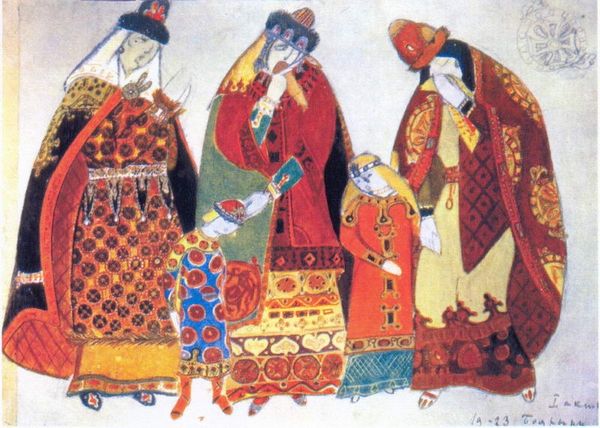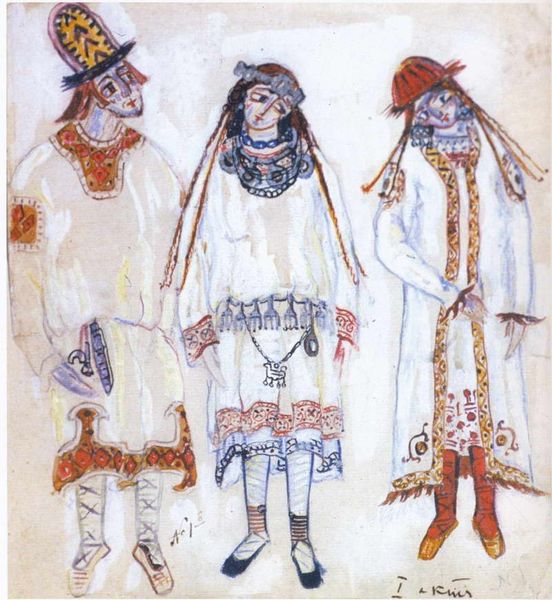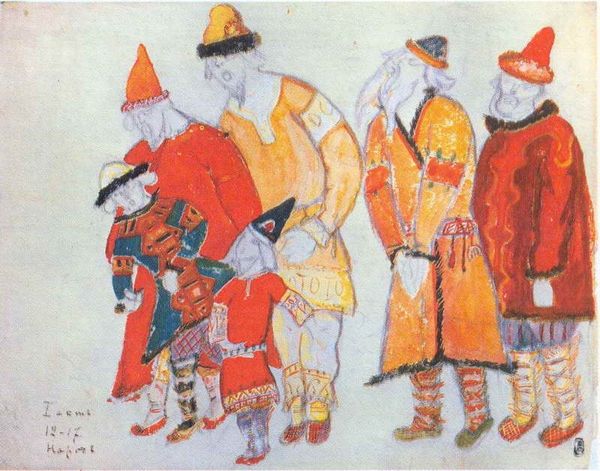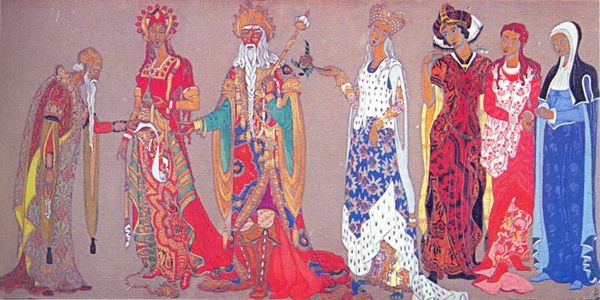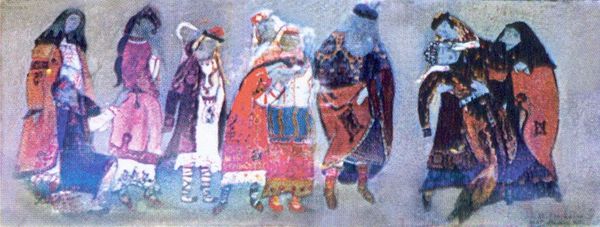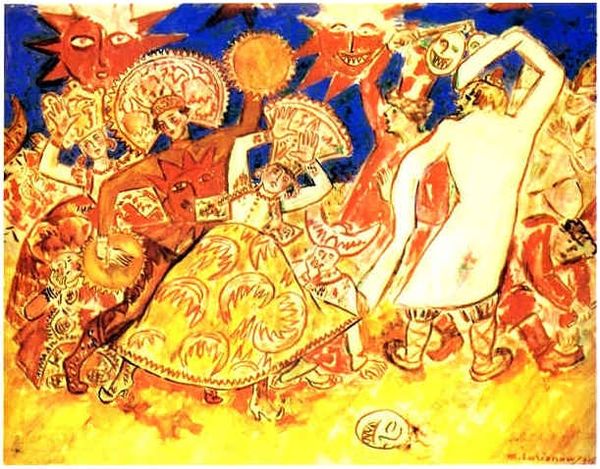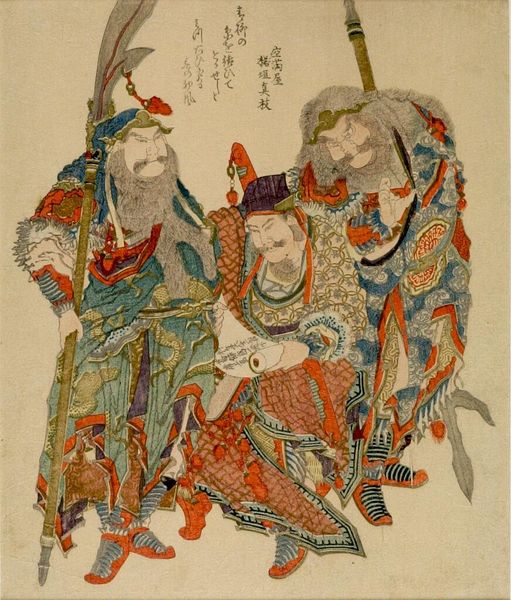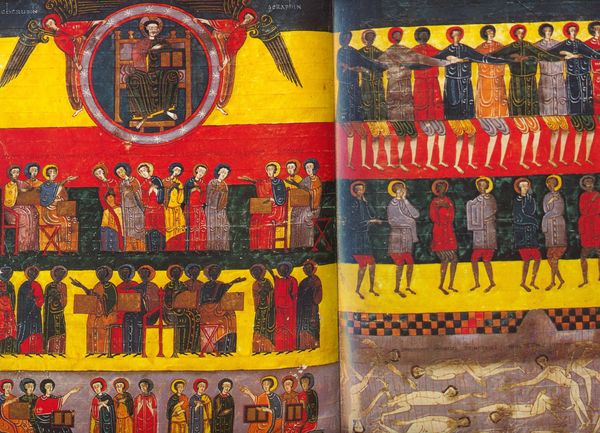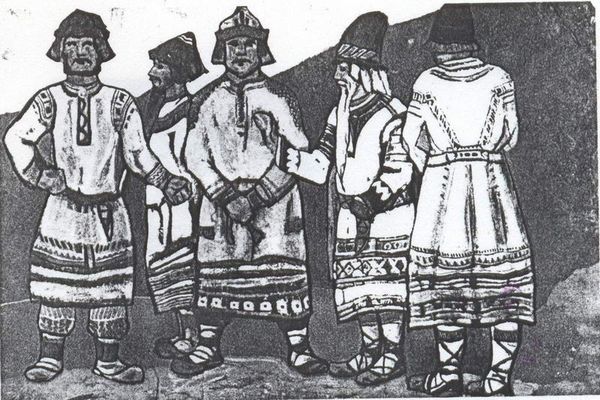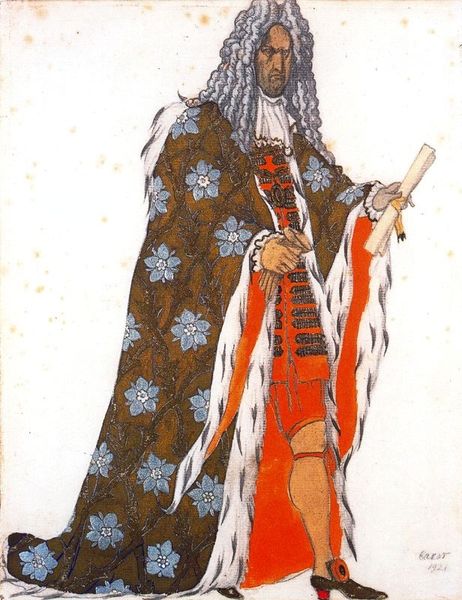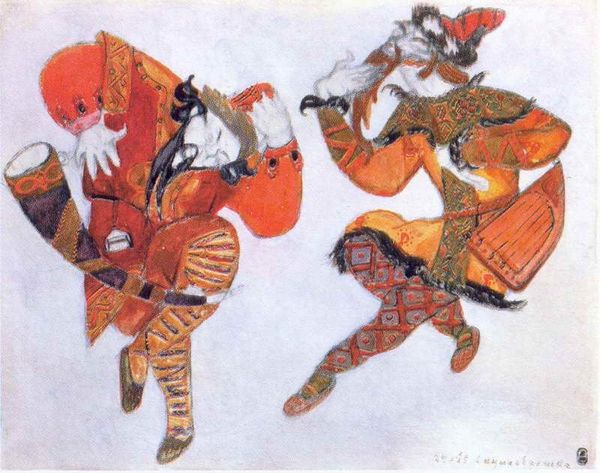
drawing, mixed-media, watercolor
#
portrait
#
drawing
#
mixed-media
#
medieval
#
fashion and textile design
#
figuration
#
watercolor
#
sketch
#
asian style outfit
#
costume
#
russian-avant-garde
#
history-painting
#
mixed media
#
ethnic design
Copyright: Public domain
Editor: So, here we have Nicholas Roerich's mixed-media drawing, "Sketches of costumes for 'Prince Igor'." It feels like a glimpse into another world, with all those striking figures in such ornate attire. I am curious; how do you interpret this work? Curator: The cultural memory embedded in these costumes is rich, wouldn’t you agree? Roerich delves into pre-Mongol Russia, not necessarily for historical accuracy, but for the resonance of the *idea* of that era. Note the stylized forms; the patterns, almost totemic in their repetition. What do you make of their similar yet individualized ornamentation? Editor: Well, it strikes me that each figure maintains its own sense of identity, yet is part of a larger cultural unity reflected in the repeated shapes. Are those shapes actually meant to represent something specific, like heraldic symbols? Curator: Perhaps. Or possibly a symbolic representation of cultural belonging. Consider the beard; in many cultures, including early Slavic societies, it signifies wisdom, status, lineage. The variations – colour, length, styling – might represent individual clans or societal roles within Prince Igor’s world. Editor: That makes sense! They aren’t just generic beards; they are markers of identity. So Roerich isn’t just designing costumes; he’s building a visual language. Curator: Exactly! He's invoking the psychological weight of historical archetypes, asking the audience to connect with a past – real or imagined – through potent visual cues. It really illuminates how costumes carry cultural narratives. Editor: I never thought about costumes being read almost like illuminated manuscripts before. It is really quite insightful. Thanks!
Comments
No comments
Be the first to comment and join the conversation on the ultimate creative platform.
